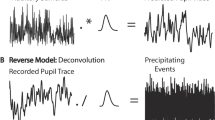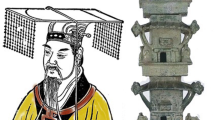Abstract
We recorded in 16 healthy subjects the sagittal and frontal components of the stabilogram when standing on a rigid motionless or movable (oscillating) platform under four conditions of visual control: (i) open eyes, OE; (ii) closed eyes, CE; (iii) central vision, CV, and (iv) virtual visual environment, VVE. Under the latter condition, subjects observed the 3D image of a room, which was generated by the computer; the image was adhered to head movements in such a manner that a peculiar connection for normal visual conditions between movements of the head and displacements of the visible visual environment was reproduced. Through a low-pass filtration of a trajectory of the center of pressure of feet (CPF), two elementary variables were received, horizontal motions of the center of gravity (CG) and the difference between the CPF and the CG (CPF-CG). Changes in these variables (CG and CPF-CG) were estimated using spectral analysis and subsequent calculation of the median frequency (MF) and root mean square value (RMS) of the spectra. The MFs of the spectra of the investigated variables were approximately identical under conditions of standing on oscillating and motionless supports and showed no clear dependence on various visual conditions. Unlike MFs, the RMSs of the spectra of body sways appeared more dependent on changes of conditions of standing and the mode of visual control (differing from each other in the higher sensitivity to modifications of conditions of standing and visual control). With standing on the motionless support, the RMSs of the spectra of both variables were the greatest under VVE and CE conditions and the smallest under OE condition. The body oscillations were considerably amplified under conditions of standing on a movable support, and a different pattern of visual influences on the RMS of both investigated variables was revealed. The RMSs had the greatest value under CE condition and were much smaller (50–40%) under other visual conditions, including the VVE condition. Therefore, our findings show that, under VVE conditions, visual sensory afferentation is ignored by cerebral structures controlling postural adjustments if standing occurs on a motionless support but is effectively used at the maintenance of upright stance on an oscillating support.
Similar content being viewed by others
References
D. N. Lee and J. R. Lishman, “Visual proprioceptive control of stance,” J. Human. Move Studies, 1, No. 1, 87–95 (1975).
A. Berthoz, M. Lacour, J. F. Soechting, and P. P. Vidal, “The role of vision in the control of posture during linear motion,” Prog. Brain Res., 50, No. 2, 197–210 (1979).
A. M. Bronstein, “Suppression of visually evoked postural responses,” Exp. Brain Res., 63, No. 3, 658–665 (1986).
W. N. van Asten, C. C. Gielen, and J. J. Denier van der Gon, “Postural adjustments induced by simulated motion of differently structured environments,” Exp. Brain Res., 73, No. 2, 371–383 (1988).
T. M. Dijkstra, G. Schoner, and C. C. Gielen, “Temporal stability of the action-perception cycle for postural control in a moving visual environment,” Exp. Brain Res., 97, No. 3, 477–486 (1994).
J. H. Allum, “Organization of stabilizing reflex responses in tibialis anterior muscles following ankle flexion perturbations of standing man,” Brain Res., 264, No. 3, 297–301 (1983).
R. Johansson and M. Magnusson, “Human postural dynamics,” Crit. Rev. Biomed. Eng., 18, No. 6, 413–437 (1991).
J. J. Jeka, G. Schöner, T. Dijkstra, et al., “Coupling of fingertip somatosensory information to head and body sway,” Exp. Brain Res., 113, No. 3, 475–483 (1997).
B. N. Smetanin, K. E. Popov, and G. V. Kozhina, “Postural reactions in humans to vibrational stimulation of the shin muscles under conditions of visual inversion,” Fiziologiya Cheloveka, 28, No. 5, 53–58 (2002).
L. M. Nashner and P. Wolfson, “Influence of head position and proprioceptive cues on short latency postural reflexes evoked by galvanic stimulation of the human labyrinth,” Brain Res., 67, No. 2, 255–268 (1974).
F. Hlavacka and C. Nijiokiktjien, “Postural responses evoked by sinusoidal galvanic stimulation of the labyrinth,” Acta Oto-Laryngol., 99, No. 1, 107–112 (1985).
R. Johansson, M. Magnusson, and P. A. Fransson, “Galvanic vestibular stimulation for analysis of postural adaptation and stability,” IEEE Trans. Biomed. Eng., 42, No. 3, 282–292 (1995).
B. L. Day, A. C. Severac, L. Bartolomei, et al., “Human body-segment tilts induced by galvanic stimulation: a vestibularly driven balance protection mechanism,” J. Physiol., 500, No. 3, 661–672 (1997).
K. E. Popov. B. N. Smetanin, and G. V. Kozhina, “Adaptational modifications of the vestibular postural response in humans under conditions of horizontal visual reversal,” Neurophysiology, 33, No. 4, 258–265 (2001).
R. J. Peterka and F. O. Black, “Age-related changes in human posture control: sensory organization tests,” J. Vestib. Res., 1, No. 4, 73–85 (1990/1991).
B. N. Smetanin, K. E. Popov, and G. V. Kozhina, “Dependence of joint stiffness on the conditions of visual control in upright undisturbed stance in humans,” Neurophysiology, 38, No. 2, 134–141 (2006).
O. Caron, B. Faure, and Y. Breniere, “Estimating the centre of gravity of the body on the basis of the centre of pressure in standing posture,” J. Biomech., 30, Nos. 11/12, 1169–1171 (1997).
P. Rougier and I. Farenc, “Adaptative effects of loss of vision on upright undisturbed stance,” Brain Res., 871, No. 2, 165–174 (2000).
D. A. Winter, A. E. Patla, F. Prince, et al., “Stiffness control of balance in quiet standing,” J. Neurophysiol., 80, No. 3, 1211–1221 (1998).
P. Rougier and O. Caron, “Centre of gravity motions and ankle joint stiffness control in upright undisturbed stance modeled through fractional Brownian motion framework,” J. Mot. Behav., 32, No. 4, 405–413 (2000).
Author information
Authors and Affiliations
Corresponding author
Additional information
Neirofiziologiya/Neurophysiology, Vol. 39, No. 6, pp. 476–485, November–December, 2007.
Rights and permissions
About this article
Cite this article
Smetanin, B.N. Maintenance of upright stance in humans in normal and virtual visual environments. Neurophysiology 39, 414–422 (2007). https://doi.org/10.1007/s11062-008-9005-8
Received:
Published:
Issue Date:
DOI: https://doi.org/10.1007/s11062-008-9005-8




